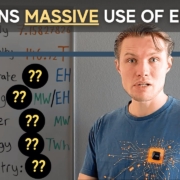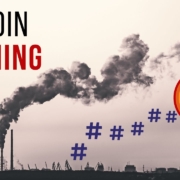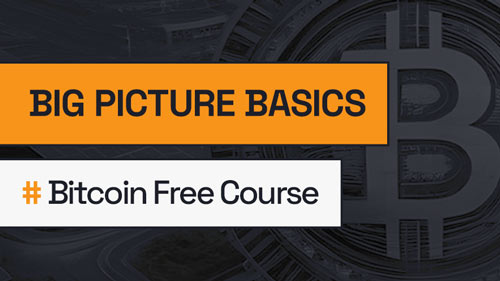Bitcoin Accumulation Flywheel | For Individuals | Hashpower Academy
Dive into an educational exploration of a smart strategy that combines Bitcoin mining with collateralized credit to build your Bitcoin wealth.
For example, use 1 BTC to generate steady Bitcoin cash flow through mining while holding your original stack for future growth. This approach balances spending today, saving for tomorrow, and reducing risk over time as Bitcoin yield and appreciation lower loan-to-value (LTV) ratios. What You’ll Learn: Expand Your Holdings: See how mined Bitcoin cash flow strengthens collateral, reduces loan risks, and opens doors to more credit.
Tax Insights: Understand how loans avoid taxable sales and how mining hardware/electricity costs may offer tax deductions.
Dual Benefits: Explore earning consistent Bitcoin cash flow from mining alongside Bitcoin’s long-term price appreciation.
The Flywheel Concept: Discover how mining and credit work together to boost Bitcoin accumulation, manage risks, and grow wealth strategically. Start your learning journey at terahash.finance and deepen your Bitcoin knowledge today!
– – – – – – – – – – – – – – – – – – – – – – – – – – – – – – –
Hashpower Academy Donations (Thank You!):
L1 Bitcoin: bc1qlgkc4pyrz22cykrx49cmuku3zyy2nuequu6r9y
L2 Lightning: academy@walletofsatoshi.com
Hosted Bitcoin Mining accessible to Everyone: (Waitlist)
https://www.Terahash.Finance/Platform
The Big Picture Basics (Free Bitcoin Course)
https://www.hashpower.academy
Request a Video Topic – Hashpower Academy
https://forms.gle/em32yYXt7TtC3qUY6
Align a meeting if you are looking to explore Mining/Hosting and other Business/Consultation Inquiries:
https://calendly.com/terahash/30min
– – – – – – – – – – – – – – – – – – – – – – – – – – – – – – –
Affiliate Links to support the Hashpower Academy,
By exploring Products, Markets & Services across the Bitcoin Ecosystem:
Wallets – for Self Custody
Trezor: https://affil.trezor.io/SHpa
Ledger: https://shop.ledger.com/?r=0e5e239ec8ba
Blockstream: https://store.blockstream.com/?code=academy
Ngrave: https://www.ngrave.io/?sca_ref=9211144.4mNYVms7D0
Miners – for the Home
HeatBit: https://heatbit.com/?ref=academy
SoloSatoshi: https://www.solosatoshi.com/aff/1405/
IxTech: https://ixtech.xyz/?ref=JAKE
Cloaks: https://www.cryptocloaks.com/aff/Academy/
Platforms to Explore
ViaBTC Pool: https://www.viabtc.info/signup?refer=1553491
TradingView: https://www.tradingview.com/?aff_id=154436
BitRefill: https://www.bitrefill.com/invite/68zjuypv
– – – – – – – – – – – – – – – – – – – – – – – – – – – – – – –
Financial Disclaimer:
This video serves educational and informational purposes only and should not be construed as financial advice or investment recommendation. The views expressed are those of the presenter and do not represent Hashpower Academy’s official stance. Information is provided ‘as is’ without warranties, express or implied, as to its accuracy or completeness. Engaging with Bitcoin involves high risk, including potential financial loss, market volatility, and energy costs, and is suitable only for those who can bear these risks. Always conduct your own research and consult with a qualified financial or technical advisor before making decisions related to Bitcoin.
#bitcoin #mining #BTCTC #learn #Saylor #MSTR #MSTY #BitcoinNews #passiveincome
Video Transcript:
Hello there and welcome to the Hash Power Academy, your place to learn anything to do with Bitcoin. The topic of today’s video is what I like to call the Bitcoin accumulation flywheel, leveraging the debt money system of the past to build the energy money system of the future. The combination of Bitcoin lending in this box with Bitcoin mining in this box. And the the five key components of this are your bitcoin as collateral credit that you essentially access the value of your bitcoin and what you do with that. Just don’t forget that there is interest acrewing on such a thing. So if you used said credit to buy mining hardware and Bitcoin mine or even use uh the credit as well to pay electrical bills so it would increase increase at an ever everinccreasing amount both electricity and interest costs and what you weighing it against this Bitcoin yield and the value of Bitcoin going up in terms of dollars over time and when you combine it all together you’ve got risks and rewards of using credit and risks and rewards wards of using Bitcoin mining. There’s incredible rewards on both sides. We’ll dive into that. And there is risks on both sides. But interestingly, this setup, both of these components naturally derisk each other, and we’ll go into that as well. other pieces of the video. I’ll also delve into what if Bitcoin mining could be used as collateral, something that I’m developing into the future where you could essentially deploy your your hash rate as collateral for lending just like Bitcoin. Think of all of the financial benefits of Bitcoin, but introduce Bitcoin mining with Bitcoin yield. There’s some spicy stuff in there, and we’ll dive into that somewhere in the video. And there’s all the other different components such as the tax advantages of buying a physical good like Bitcoin mining hardware if you have that in a in a structure such as an LLC, all those sorts of things. And the most important aspect of this is we will be diving into all of the risks before we go into the rewards because this is not financial advice. This is educational purposes only of course. And let’s dive in. So number one, your one bitcoin and we’re going to use $100,000 as its example because remember with credit and the debt money system, the unit of account is dollars for here. So if you’ve got your say 14% interest, which is what should I say standard for bitcoin lending and they typically let you access the value of say 50% of your bitcoin. So, if you’ve got your one Bitcoin deposited in a centralized lending platform or a decentralized one that there’s a couple being developed at the moment actually, and you put your $100,000 of value, they’ll let you borrow $50,000, 50%. 50% loan to value, the loan and the value. And the third piece of this is what you do with that credit. If you buy Bitcoin mining hardware, that is something that’s producing say 30 to 60% a year in Bitcoin. Now, if the price of Bitcoin goes up, this number goes up. If you buy the machines in bulk by jumping this all up by 10x, 20x going into the millions, you’re going to get a cheaper price per unit. You’re going to get much higher yield because your your dollars buy more hash rate, so you’re earning more Bitcoin from the network. And so there’s all these different numbers and pieces. So I’m going to really try and keep it relatively slow just to to make sure all the pieces are understandable. And then the most important piece about this in the risk side of the credit is the value of your collateral. If it drops in its dollar term with a dollar unit of account here, if it got to about $60,000 with your $50,000 of debt, that’s when you’re in danger zone really. And if it gets too close to the amount of debt that you owe, they will forcibly sell the the Bitcoin to pay off that loan. So, how do you avoid it? You reduce the amount of credit versus increasing the amount of collateral. And how do you do that? You utilize the credit into Bitcoin mining to produce more Bitcoin and derisk the whole thing by starting with one Bitcoin as the quantity of your collateral and continually increase that quantity through Bitcoin mining. And this goes back to the idea of good debt versus bad debt. Bad debt is when you spend on your credit card at 10, 20, 30% to go on holiday. Sounds lovely. You’re going to remember it forever. But that price tag is now going to acrue interest. There’s nothing behind that that’s now generating you some income to pay that back. And that’s where the good debt conversation comes in, whilst considering the risks rewards of what you use on it. If you are acrewing interest at 14%, you need to be paying that back somehow. That’s where the the Bitcoin mining piece steps in. If you notice that the Bitcoin mining is of a multiplier higher in a relative period of time of stacking more Bitcoin, uh say if you purchase mining machines that for every $1 of electrical expense, you’re producing $3 of Bitcoin, that would be a production floor of 33%. Because you want to get the most efficient miners to get that ratio the highest. the inefficient machines, you’re going to have a lower um energy to electrical cost versus revenue output. The ratio will be smaller. You want the highest ratio possible. And with the latest generation machines coming out, you’ll probably get to the 33 down to the 25% production cost of the price. You want to get the loan to value percentage lower than the natural production cost of your Bitcoin mining setup. And so understanding that percentage on both sides is that clear piece of information because if the price of your Bitcoin drops close to your loan to value percent, you’re in danger zone. So if you’re continually stacking Bitcoin, um, say $4 a bitcoin adding to collateral to every $1 of electrical expense plus the interest, you got to factor all these pieces in. You’re making the collateral grow quicker in quantity than the interest is compounding. And what that does is lower your loan to value. So the mining is derisking the credit side. And the credit side, interestingly, allows you to spend and buy mining hardware without selling Bitcoin in the first place. Because remember this, mining, the reward side of mining is an opportunity to accumulate a greater quantity of Bitcoin over time than the Bitcoin you could have just purchased in the first place. the the $50,000 um being deployed. Um well, you’re either selling Bitcoin or with this you’re accessing credit. So, what it does is this. I mentioned that credit is on a dollar-based unit of account. With Bitcoin mining, you’re on a Bitcoin unit of account seeking a Bitcoin return. Because if you didn’t use credit at all and you just spent $50,000 or half a bitcoin on mining machines, you spent half a bitcoin on the miners, you’re trying to make those miners produce more than half a bitcoin in their lifespan of operation. And so what you have there is this bitcoin ROI that you’re trying to chase and the dollar value is a bit different. So, interestingly, if you’re not selling the Bitcoin in the first place because you’ve used credit and yes, twice as much, you’re not chasing a Bitcoin ROI. You’re chasing the dollar ROI from mining plus the interest. So, you can chase and achieve it much quicker relative to a four to five year lifespan of machines. You’ve also got the risk side of those machines are physical goods. They can break. Make sure they’re with a good provider that can have good access to repairs. Always ask the mining host, if my machine breaks for x manner of reasons, what is the repair time? That’s the most important because you’ve got this opportunity cost of diminishing returns. The the h havinging comes every four years and the difficulty adjustment is going up. So with mining, you’re naturally earning a smaller and smaller quantity of Bitcoin over time, but its dollar value is higher. And so these are all the different moving parts of this. But the natural effect overall is you’ve got this waterfall of the pristine collateral of the entire world, Bitcoin, accessing its value to leverage it naturally to buy mining hardware, a tax advantage physical good if you put it in an LLC or some other thing. Again, I’m not a tax advisor or anything else. Go and seek all such advice yourselves. You’re producing Bitcoin. get the most efficient machines and cycle said Bitcoin into the collateral to derisk the credit side. Now, what’s the what are the outcomes of this? What are you trying to achieve here? Well, if you stack your half Bitcoin from the mining over said set said amount of years, you’ve got 1.5 Bitcoin. All you need all you need is to get the loan to value lower than 33%. So that when you close that loan, you’re selling effectively one half half of a bitcoin. So you’ve still got one bitcoin plus you’ve got the miners still. That’s the point to reach where when you close that percentage uh when you close the loan. You could also sell the machines if they’re liquid. We’ll get on to that in a second. you you want the loan to value to drop to a point that when you close the loan, you’re closing it with still more than one whole Bitcoin plus the machines that you purchased with the credit in the first place. So, this overall process started with one bitcoin and you close the loan with more than a bitcoin plus the mining hardware or you sold the miners and you’ve finished up with 1.2 345 bitcoin. It’s also dependent on the price as well. But the interesting thing of this is naturally you want the interest from the mining side, the the yield to be of a greater multiplier than the interest because Bitcoin trades sideways 90% of the time. I think there’s like 10 to 20 days where it has its stupidly high green moon candles. So if you’re trading Bitcoin and you miss out on those massive upsides, you’re better just holding. And on the mining side, obviously, every time it shoots up, you’re capturing that dollar premium or in in in terms of uh loan to value, credit side, you’re stacking that dollar value of Bitcoin because a lot of lending products, the more collateral you have relative to the amount of debt that you have, the lower your loan to value, they lower the interest rate as well. So, you’ve got this natural d-risking by increasing the collateral and d-risking reducing the interest rate. So the rate of compound interest is lower as well. We’re in a world where if you’ve got ex stupid amounts of dollars, you get the tiniest tiniest insignificant interest rate and if you got no money, you get the highest interest rate. Not really meritocracy if I scale economy in a sense, but not really good. Um, yeah, there’s lots to this, but the the overall gist is you’re able to get the rewards of credit to buy miners and the reward of having a a dollar-based unit of account for mining, which is much quicker to achieve than chasing the Bitcoin return on investment unit of account setup. And um I’ll get to the bit that I’m developing which is if cash rate was made liquid and fungeible you could loan against it. And so what if instead of um extracting $50,000 from this entity to buy physical good that you could deploy it as hash rate as an asset and instead of uh stacking the Bitcoin over time to get your extra half Bitcoin to lower the loan to value to 33%. What if you could immediately access the $50,000 of credit by hash rate as a financial instrument and deploy the $50,000 of hash rate which produces the Bitcoin and you immediately jump from the 50 50% LTV in the credit sense straight down to 33% loan to value and Bitcoin mining hardware is less volatile because you’re also trying to anticipate the the downside risk of your collateral. plus this new form of collateral against credit. Because here’s the thing, the financial sector don’t look so much in the mining and energy sector because they’re so obsessed with Bitcoin as the financial instrument and the energy sector obsessed with energy always needing finance. So I’m sort of envisualizing this way of combining these two and condensing them down into this sort of natural feedback loop in the same structure. and you’re essentially just producing more Bitcoin and cycling that immediately into collateral here. It it gets very interesting and very powerful when you combine the issuance power of the network as a financial instrument in of itself. If you’re interested in that sort of thing, I have a website terraash.inance. That’s my project of many years in development and it’s where all this sort of educational material of the academy has truly come from. It’s something for the future and yeah, so I think I will stop it there. There’s lots of different value ads in this video. If you have any questions, drop them in the comments. Like, subscribe, and I will see you in the next video. Goodbye.














Leave a Reply
Want to join the discussion?Feel free to contribute!